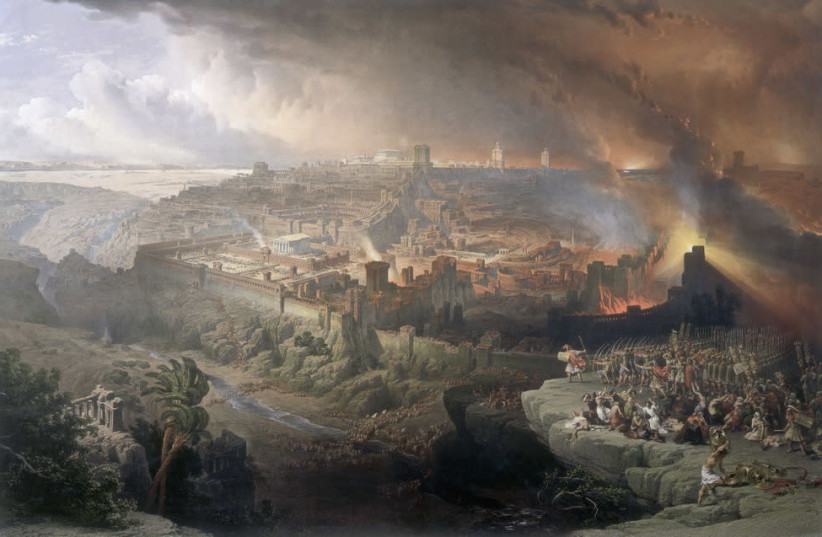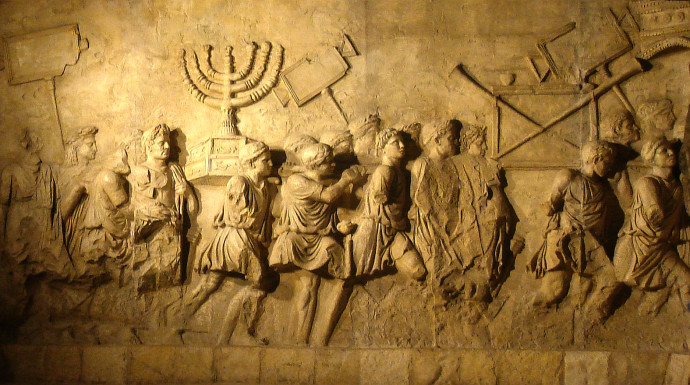by Jerusalem Post Staff
The outpost, called Ma'ale Romaim, was built during the Hasmonean period, near the road that led to Jerusalem.
 |
The Siege and Destruction of Jerusalem by the Romans Under the Command of Titus, A.D. 70
(photo credit: DAVID ROBERTS/WIKIMEDIA COMMONS)
|
In the area of the Herzog Medical Center in Givat Shaul, Jerusalem, the restoration of an ancient archeological outpost was completed this month.
The outpost, called Ma'ale Romaim, was built during the Hasmonean period, near the road that led to Jerusalem.
Archaeological restoration work has revealed that this is, in fact, an outpost, which served as a small fortress in the Hasmonean period. Around it were terraces with agricultural crops, and it was probably built to protect the farmers and their livestock from looting.
The excavations at the site began as early as 1967 and were conducted by the Greek archaeologist Prof. Vaslius Tzafirs.
According to Prof. Tsafirs, the outpost was probably inhabited continuously for 600 years, from the Hasmonean period, 230 BC, to the Byzantine period 395 AD.

History
In 63 AD, the Romans took over the territories of Israel. The Roman forces aided the outpost to defend the road ascending to Jerusalem and added a second floor, to improve the observation and defense capability of the outpost. The staircase, built by the Romans, that connected the first and second floors of the outpost was kept in good condition and restored.
"An exciting addition to a modern hospital, which serves the population of Jerusalem and its surroundings is an archeological site that sheds light on more than 2,000 years of the history of the land of Israel and [certain periods that] are considered dark in the history of the Jewish people," Dr. Yehezkel Ken, Director of the Herzog Medical Center, said.
"[The archaeological site] sheds light on more than 2,000 years of the history of the land of Israel and [certain periods that] are considered dark in the history of the Jewish people."
Herzog Medical Center Director Dr. Yehezkel Ken
The archaeological restoration revealed a circular structure inside the outpost, in which, according to some theories, a lime pit (a kind of kiln) was built.
During the excavations, many pottery vessels from different periods were discovered in the area, shedding light on its history. Among the findings were pottery bottles for oils and perfumes from the Hasmonean period, clay candles for lighting and deep red bowls.
"We strive to raise funds to take another step in the restoration work and establish an archeological garden on the site that will allow the general public to visit this important historical structure," Ken added.
Jerusalem Post Staff
Source: https://www.jpost.com/archaeology/article-708020
No comments:
Post a Comment